Robert Enyedi
Prosodic Alignment for off-screen automatic dubbing
Apr 06, 2022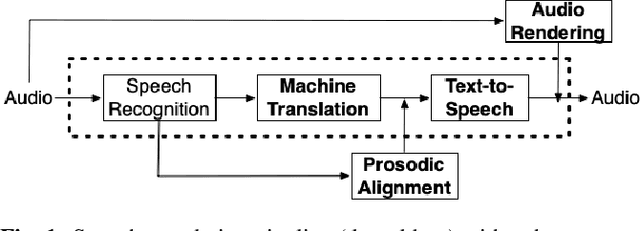
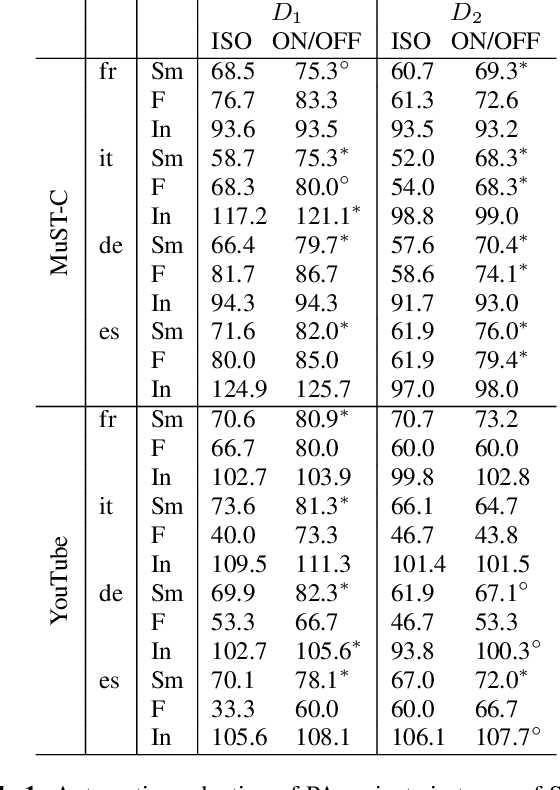
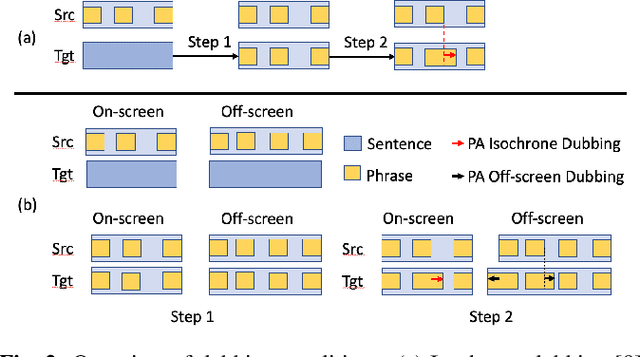
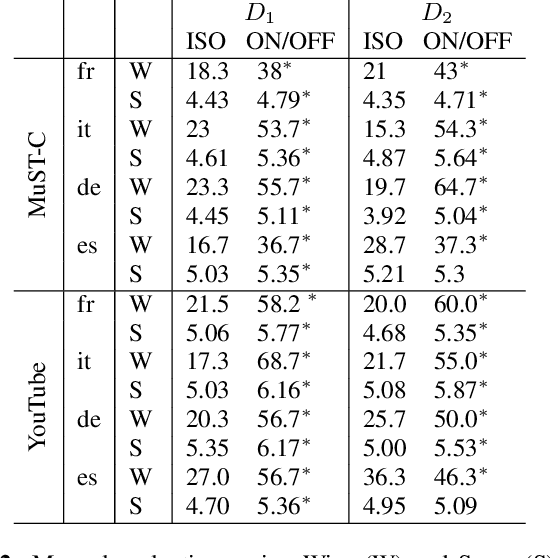
Abstract:The goal of automatic dubbing is to perform speech-to-speech translation while achieving audiovisual coherence. This entails isochrony, i.e., translating the original speech by also matching its prosodic structure into phrases and pauses, especially when the speaker's mouth is visible. In previous work, we introduced a prosodic alignment model to address isochrone or on-screen dubbing. In this work, we extend the prosodic alignment model to also address off-screen dubbing that requires less stringent synchronization constraints. We conduct experiments on four dubbing directions - English to French, Italian, German and Spanish - on a publicly available collection of TED Talks and on publicly available YouTube videos. Empirical results show that compared to our previous work the extended prosodic alignment model provides significantly better subjective viewing experience on videos in which on-screen and off-screen automatic dubbing is applied for sentences with speakers mouth visible and not visible, respectively.
Machine Translation Verbosity Control for Automatic Dubbing
Oct 08, 2021
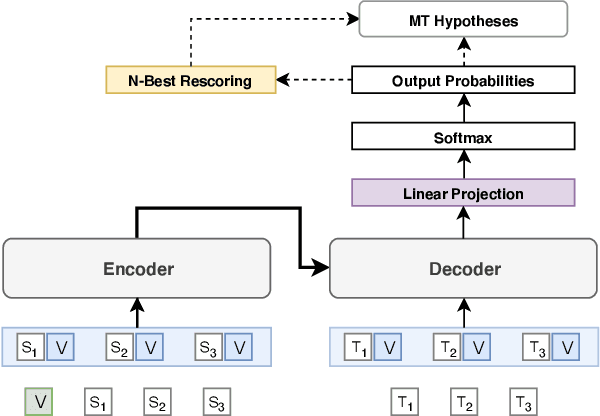
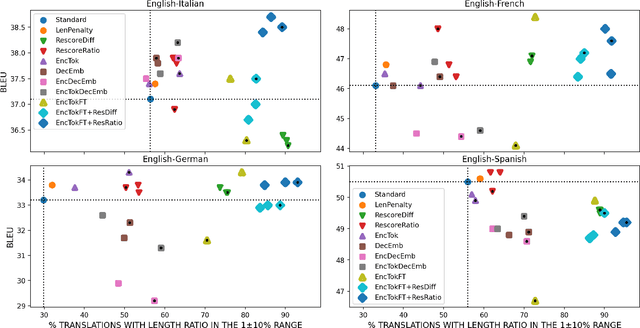
Abstract:Automatic dubbing aims at seamlessly replacing the speech in a video document with synthetic speech in a different language. The task implies many challenges, one of which is generating translations that not only convey the original content, but also match the duration of the corresponding utterances. In this paper, we focus on the problem of controlling the verbosity of machine translation output, so that subsequent steps of our automatic dubbing pipeline can generate dubs of better quality. We propose new methods to control the verbosity of MT output and compare them against the state of the art with both intrinsic and extrinsic evaluations. For our experiments we use a public data set to dub English speeches into French, Italian, German and Spanish. Finally, we report extensive subjective tests that measure the impact of MT verbosity control on the final quality of dubbed video clips.
From Speech-to-Speech Translation to Automatic Dubbing
Feb 02, 2020
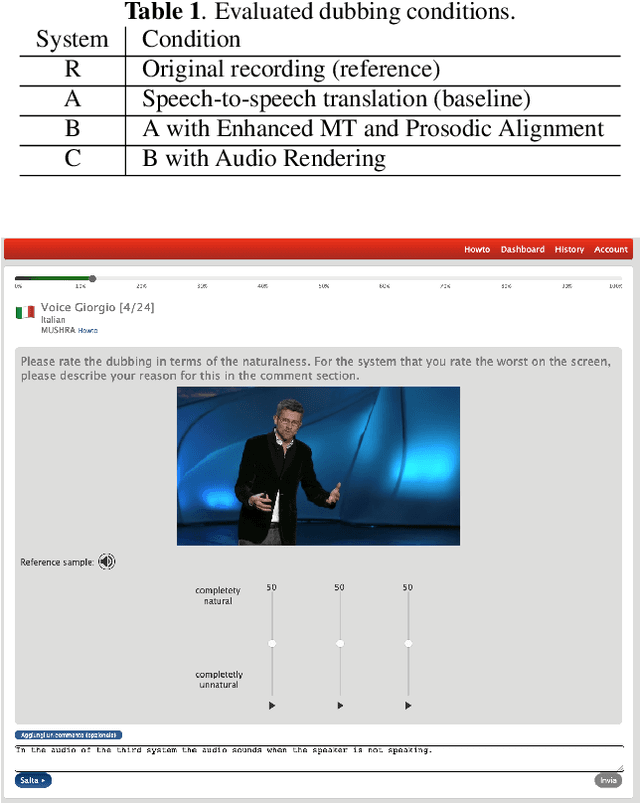
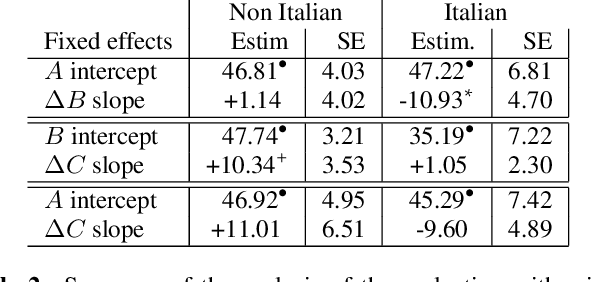
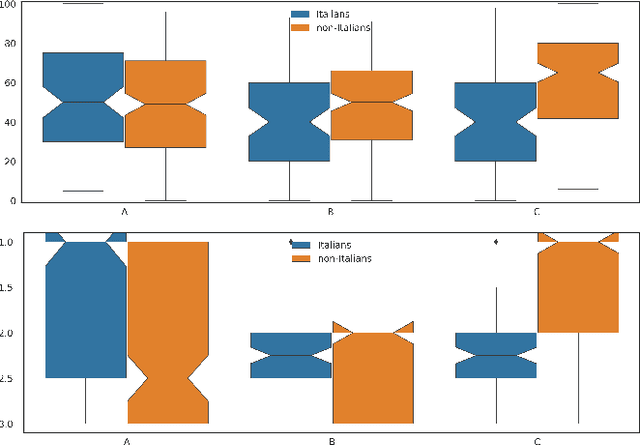
Abstract:We present enhancements to a speech-to-speech translation pipeline in order to perform automatic dubbing. Our architecture features neural machine translation generating output of preferred length, prosodic alignment of the translation with the original speech segments, neural text-to-speech with fine tuning of the duration of each utterance, and, finally, audio rendering to enriches text-to-speech output with background noise and reverberation extracted from the original audio. We report on a subjective evaluation of automatic dubbing of excerpts of TED Talks from English into Italian, which measures the perceived naturalness of automatic dubbing and the relative importance of each proposed enhancement.
Robust Neural Machine Translation for Clean and Noisy Speech Transcripts
Oct 22, 2019



Abstract:Neural machine translation models have shown to achieve high quality when trained and fed with well structured and punctuated input texts. Unfortunately, the latter condition is not met in spoken language translation, where the input is generated by an automatic speech recognition (ASR) system. In this paper, we study how to adapt a strong NMT system to make it robust to typical ASR errors. As in our application scenarios transcripts might be post-edited by human experts, we propose adaptation strategies to train a single system that can translate either clean or noisy input with no supervision on the input type. Our experimental results on a public speech translation data set show that adapting a model on a significant amount of parallel data including ASR transcripts is beneficial with test data of the same type, but produces a small degradation when translating clean text. Adapting on both clean and noisy variants of the same data leads to the best results on both input types.
 Add to Chrome
Add to Chrome Add to Firefox
Add to Firefox Add to Edge
Add to Edge